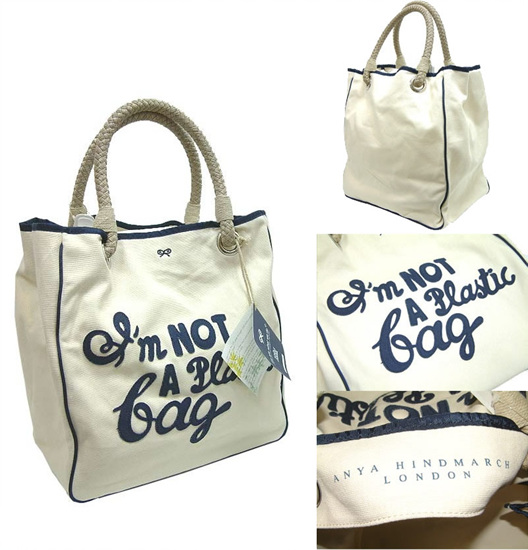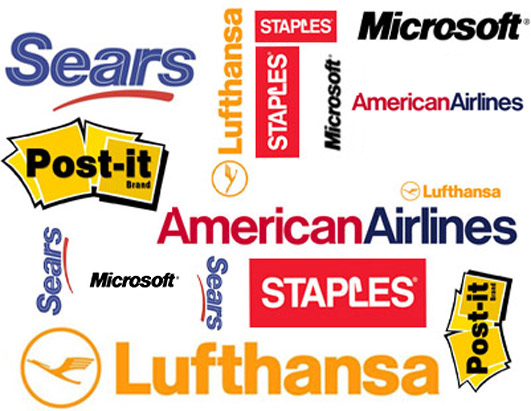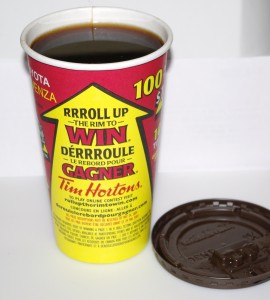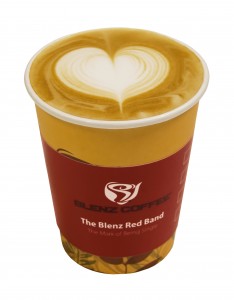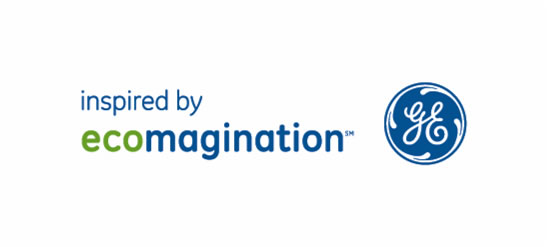Archive for Uncategorized
adzookie
April 7th, 2011 • Uncategorized
Adzookie, a company that provides free smartphone advertising to companies, has developed an interesting new way of advertising. When I saw the following picture from this article on AdFreak, lights were going off in my mind:
The reason why this article is interesting to me is because just hours ago in today’s COMM296 lecture, we had been discussing ads painted on school lockers. A school district in the U.S. accepted thousands of dollars to allow companies to place ads on 10% of the lockers in school. In this case, Adzookie is offering to pay people’s mortgage each month if they are willing to change their house into a billboard. AdFreak questions whether this is ethical or not. In my opinion, what Adzookie is doing is ethical, given that they are not violating municipal laws.
On the “Paint My House” page of Adzookie’s website, they invite people to fill out an application form. The choice to have their house painted is entirely up to the owner; in no way is Adzookie deceiving them or painting their houses without their permission. As well, on its website, Adzookie has clearly stated what the conditions of the agreement are. If the home owner decides to cancel the agreement, Adzookie will cease mortgage payments and repaint their house for them, free of charge. I believe that in this way, Adzookie has not engaged in any deception. In addition, this “Paint My House” program offered by Adzookie appears to cost home owners nothing; in fact, they receive benefits in the form of having their mortgaged paid off. The only costs to them are non-monetary: the lost of an aesthetically appealing home, and disapproval from neighbours. Thus, this “product” provides homeowners with a significant amount of value. And as Adzookie is behaving in an ethical manner, many homeowners should be willing to offer up their houses to be transformed into billboards.
brand association
March 24th, 2011 • Uncategorized
Today, I read the article, “‘Skins’ Ends Season on a Higher Ratings Note” from the Media & Advertising category of the Business section in the New York Times, and a number of thoughts have come to my mind. The article provides a clear example of how important brand association and brand image is for marketers. Large firms spend millions of dollars positioning their brands in the competitive marketplace to increase its perceived value from the eyes of consumers. Brand association is a big part of how consumers describe and think about brands; thus, negative brand associations can adversely affect a brand’s acceptance and image.
The TV drama series, “Skins”, launched by MTV has generated a controversial debate due to its sensitive content which many find to be inappropriate for young viewers. However, MTV’s ratings show a 59 percent increase in viewership among people of the age 12 to 34 from that of a year ago. I believe that this segment group is an important target market for many companies, because Gen Y individuals represent a massive number of potential consumers and have the purchasing power to spend on consumer goods. I was surprised to learn, however, that the sensitive content of “Skins” has resulted in current marketers removing their advertisements and potential sponsors avoiding purchasing commercial time during the show. The reason is evident: marketers are concerned about their brands’ images. For a number of companies, the show’s image is not a good fit with their brand. Their actions indicate that they want to prevent consumers from associating their brands with the provocative ideas and messages of the show.
This article brings to light the important role that brand association plays in developing brand equity. Brand association is so important that marketers can even give up targeting an attractive segment to protect their brand images. Thus, I realize how challenging it is for marketers to choose the right channels in which to launch advertisements for their products. If they are not careful, they may end up creating a negative image for their brand.
i’m not a plastic bag
March 17th, 2011 • 1 comment Uncategorized
I found Claudia Chung’s article, “I’m Not a Plastic Bag”, from her blog to be a very interesting discussion on the use of branding to increase the perception of value. The canvas bag, sporting the words “I’m Not a Plastic Bag”, was sold for $15 in stores. As time progressed, these bags began to appear online and were sold for around $700-2000. The incredible part is that there would still be people willing to buy it. Many facts pointed out by Claudia in her article provide great explanations for this puzzling phenomenon.
Firstly, the bag was launched by British designer Anya Hindmarch. I agree with Claudia in that branding plays an important role in developing the popularity and acceptance of this bag. Anya Hindmarch is a well-known luxury brand, and consumers trust it. This leads to a question of the bag’s price. Being priced at $15, consumers are likely to perceive the value of this bag to be tremendous. Many tote or canvas bags released by designer labels are sold for well over $100; $15 is obviously an incredible deal and hardly captures the value of this product. The $700-2000 price range for the bag, as sold online, is a better indicator of the bag’s value. This high price also shows that consumers perceive this bag as a prestige product, and the high price reflects its high quality. Another point to be made is that this bag was released in limited quantities, and, in other words, had an exclusive distribution intensity. Exclusivity can also increase a product’s value, and I believe that this has contributed to the high price. Lastly, the bag’s purpose, as stated by Claudia, is to promote “the idea that reusable shopping bags can be a fashion statement as well”. Given the increasing popularity of the “green trend”, this has also led to an increase in the perceived value of this product.
the marketing in fonts
March 10th, 2011 • Uncategorized
Everyone can probably name what they think makes an advertisement attractive and persuasive: colors, engaging writing, interesting imagery. However, one aspect of successful advertisements that is often overlooked is the font used in communicating a marketing message. Like colors, the type of font chosen can have different meanings and evoke different emotions; surely, marketers have taken consideration of this when creating ads or corporate logos.
Adnan’s article “The Swiss Inspiration. Helvetica.”, from his blog Plain. Simple. Marketing, discusses how the creation of the sans serif font Helvetica has generated a revolution in the way that people think about and use fonts. Since it’s creation, a multitude of governmental bodies and corporations uphold its bold, clean and crisp letters in their road signs, public notices and logos. Today, it has become the most widely used typeface. In his article, Adnan mentions that designers feel that Helvetica is an “icy glass of distilled water offered to a nomad stranded in the hot dusty desert”. The authoritative look of the font gives words power and meaning and by creating logos and advertising messages using Helvetica, companies can evoke these feelings about their brands.
Adnan’s interesting discussion about the Helvetica font has brought to my attention how important the decision of choosing the right fonts to use is for marketers. If the inappropriate font is chosen and the wrong emotions about the brand is conveyed to customers, companies may suffer negative consequences; these could include decrease in sales, and a negative brand reputation. Therefore, in order to ensure that the right feelings are attached by consumers to their brands, companies must be careful to choose fonts that help them elicit these feelings in their advertising and logos.
roll up the rim to win
March 3rd, 2011 • Uncategorized
Earlier today, I walked over to Tim Hortons and found, to my annoyance, that the line seems to have doubled from it’s normal length. Therefore, I decided not to make a purchase afterall. It occurred to me later that Tim Hortons is once again holding their annual Roll Up the Rim to Win contest; that would explain the large increase in traffic.
In a similar manner to Subway’s $5 Footlog promotion, Tim Hortons’ is using their Roll Up the Rim to Win contest as a way to differentiate themselves and add value to their product. It’s a contest that millions of loyal consumers look forward to every year, and helps Tim Hortons add more value to their experience of buying their daily coffee. When one hears “Roll Up the Rim”, Tim Hortons is likely to come to mind immediately. This idea has become linked with the company’s brand in consumers’ minds; if it were to be imitated by a competitor, the first thing consumers think of may be Tim Hortons. In my opinion, this promotion is very effective. Many consumers find it fun and engaging and they are excited when they make a purchase because they anticipate what will happen when they roll up the rim. With every coffee they buy, they now also have the chance to win. Psychologically, this chance feels like it comes “free” with every purchase of a hot drink. As well, consumers will feel that the more drinks they buy, the better chances they have of winning. For the company, this means an increase in consumer traffic and spread of brand awareness, which ultimately leads to increased revenues.
With great prizes such as 40 Toyota Matrix’s, 100 Panasonic 3D TV packages and over 47 million food prizes, it’s unsurprising to see consumers rushing into Tim Hortons stores to buy coffee drinks in hopes of finding the cup with a grand prize, like how Charlie found the golden ticket in his chocolate bar.
how do you do?
February 23rd, 2011 • Uncategorized
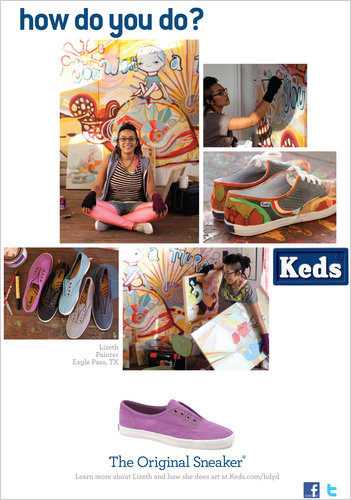 Keds, a brand that has been around since 1916, are canvas sneakers with rubber soles. Since its origination, Keds has seen a decline in popularity in the 1990’s and 2000’s. One reason for this lost in consumer interest may be attributed to the lack of creative promotional strategies the company has employed in its marketing. The brand’s image has not kept pace with constantly changing fashion attitudes, and the result is a product that is viewed as unattractive, particularly to the younger generations in society. For instance, seeing their parents wearing Keds shoes, Generation Y members feel that the product is boring, uncool and uninspiring.
Keds, a brand that has been around since 1916, are canvas sneakers with rubber soles. Since its origination, Keds has seen a decline in popularity in the 1990’s and 2000’s. One reason for this lost in consumer interest may be attributed to the lack of creative promotional strategies the company has employed in its marketing. The brand’s image has not kept pace with constantly changing fashion attitudes, and the result is a product that is viewed as unattractive, particularly to the younger generations in society. For instance, seeing their parents wearing Keds shoes, Generation Y members feel that the product is boring, uncool and uninspiring.
This is changing as Keds has begun to take a more interactive approach in marketing their shoes. In 2008, the Keds Studio was launched, allowing customers to use images, text and colors from their files or those provided by Keds in designing custom shoes. The latest marketing campaign launched by the company, called “How Do You Do?”, attempts to reposition the brand and reintroduce it to the Generation Y demographic. Keds has created a mobile shoe box which will embark on a cross-country tour of various arts-focused colleges campuses. The campaign’s purpose is to engage the target market in creating and collaborating, and promoting the idea that they can use Keds sneakers as a canvas to express creativity. This is all done by having the audience interact with and experience the brand firsthand; inside the shoe box, customers can view videos to learn more about Keds and their community involvement, look at a gallery of Keds shoes inspired by different tour cities or use a touch-screen kiosk to create customized sneakers. In addition, Keds has established relationships with designers and outlets since 2009 as a part of their repositioning strategy. Artists and designers the company has partnered with create their own Keds shoes which are sold on the Keds web site.
In a value-based marketing era, companies are long-term focused and committed to building relationships. Keds, with their repositioning strategy, is working towards these goals. Not only are they interacting with customers through their “How Do You Do?” campaign, but they have begun to establish long-term relationships with new corporate partners, such as designers. Their campaign aims to find local talent which will inspire them in creating future Keds products that will appeal to the younger customer population. This proves that Keds has a long-term focus and is changing along with its consumers’ attitudes.
an “endless” campaign
February 9th, 2011 • Uncategorized
Most of us are familiar with Frito-Lay, a company that manufactures and sells various snack food products (particularly potato chips), including popular brands such as Cheetos cheese puffs and Sun Chips. Recently, Frito-Lay Canada has launched a new campaign for their Doritos product, which entails showing consumers a commercial promoting new chip flavours. Nothing new there. However, this latest ad created by Frito-Lay’s is “endless”.
In the ad, two researchers who have each developed a new Doritos flavour presents a sample of their product to the “Flavour Master”. The Flavour Master enjoys both, but decides that one flavour must be destroyed. At this point, the ad ends abruptly and asks viewers to finish the story: Which flavour will be destroyed and how? Consumers are encouraged to go on www.writetheend.ca and answer this question as a part of a contest. The writer of the winning story will receive a substantial prize and their ending will become a part of the commercial.
The point of Frito-Lay’s campaign is to use this contest to get consumers to communicate which flavour they prefer through their choice of ending to the commercial. As the ending-less commercial is very neutral, there is no indication of which flavour is superior. Therefore, the choice consumers make will inevitably be based on their opinion and feeling of which flavour is most attractive to them. Frito-Lay’s campaign allows them to obtain invaluable information about their consumers’ attitudes toward potential new products: they want their consumers to tell them what they want.
I believe Frito-Lay has come up with a very interesting way for the company to interact with the target market, those whom they hope will buy and consume their products. This contest entices consumers to interact with the product, as customers can impact the outcome of the advertisement which will ultimately be released to the public. This also allows Frito-Lay to generate innovative ideas without increasing their costs significantly. The most important thing about this campaign is that they can effectively identify consumer needs and wants, and as a result, can better market the product.
blenz red band
February 1st, 2011 • Uncategorized
Starting today, the Blenz Red Band will be available at Blenz Coffee stores all across British Columbia. Using this drink sleeve as “the mark of being single”, Blenz is giving people the opportunity to meet and connect with others while enjoying their daily coffee. As Valentine’s Day approaches, this is the chance for single people to get a date for that special day of the year. All that needs to be done is to follow these steps:
1. Go to your nearest Blenz and buy a coffee.
2. Pick up a red sleeve and put it on your cup if you are single.
3. Look around the store for others who have done the same.
4. Make some eye contact and approach them to start off a conversation.
As a barista working at Blenz, I was initially shocked when I heard about this project. It seemed to me like a situation of extreme awkwardness would unfold as I am forced to promote the red band to customers.
Eventually, however, I began to realize that this is actually a genius marketing campaign by Blenz. In addition to providing the sleeves at all Blenz stores, the company started a blog at http://blenzredband.com. Throughout this month, bloggers from all over the Vancouver community will be sharing their tips and stories on relationships. In addition, they have been avidly promoting this project through Facebook and Twitter. There are tons of prize giveaways and even a contest for the best “Blenz Love Story”, a story couples can submit about how they met through the Blenz Red Band.
Sounding absurd so far? What may or may not come as a surprise is that many Vancouverites have already enthusiastically embraced this ambitious idea. In my opinion, this is a very creative marketing project that is an excellent way for Blenz to generate attention to their brand and company and also increase sales. Without a doubt, there will be singles visiting Blenz on a frequent basis this month, buying coffees and trying their luck at meeting their dream girl or guy. As for me, I’ll be behind the counter promoting the red band for the rest of February.
ecomagination
January 24th, 2011 • Uncategorized
The first time I heard about GE’s ecomagination initiative was at the 2010 International Business Conference. Kim Warburgton introduced ecomagination, its goals and its impact. Taking advantage of the trend of growing consumer concern about the world’s environmental challenges, ecomagination is GE’s commitment to developing products that meet this concern and the company’s vision of a better world. The program actively promotes the efficient use and management of energy and other resources on a global scale, and represents GE’s move towards investing in clean, energy-efficient products. The mere scale of this initiative is astounding, and its success has driven growth for the company.
With ecomagination, GE hopes to capture the imagination of ordinary people who have innovative ideas about clean energy use. Truly, ecomagination connects seamlessly with GE’s slogan, “imagination at work”. GE is reaching out to consumers who care about sustainability and renewable energy and challenging them to come up with the next big energy-saving idea. Then, GE’s takes the best ideas and puts them to action with tens of thousands of dollars of funding.
After I heard its story, I was very impressed with the concept of ecomagination, and what GE is trying to achieve. To show that they are truly passionate about sustainable business, one of the goals of ecomagination is to reduce GE’s own greenhouse gas emissions. As a company committed to addressing the pressing environmental issues faced by the world today, GE isn’t just standing on the sidelines. It’s striving to reduce its own carbon footprint while developing technologies that will help others conserve. In my opinion, this is successful marketing. They are driving the message to consumers that they are a green company. The way GE is connecting directly with consumers to inspire them with their ecomagination efforts is one of the most successful aspects of this campaign.
The many creative ads and projects GE has come up with for their ecomagination efforts has made it essentially a brand on its own. In sum, GE has successfully merged the green trend with what they do best to provide increased value to consumers and grow their company.
Learn more about ecomagination at http://www.ecomagination.com/.
blog marketing
January 19th, 2011 • Uncategorized
One activity I cannot go a day without doing is following other people’s blogs and sometimes, I find myself checking for new posts obsessively. Silly as it seems, blogging and reading other people’s blogs is possibly the most addicting and entertaining thing one can do on the internet. But why?
Fashion blogs, food blogs, and art blogs – they have become the destinations I frequent the most when I am browsing the internet. You can practically find a blog about anything you enjoy or value in the vast expanses of the internet. This fact is why blogs are so appealing, because people will read posts that relate to their interests. And this is how blogs can be a powerful marketing tool.
Blogs are a way that people can share their ideas and thoughts, whether negative or positive, and anyone who is online can read them. One of the things marketing aims to achieve is communicating value to consumers. Blogging is a relatively inexpensive way they can reach out to people globally and achieve this. It is also an effective way they can develop two-way communication with customers and further improve their offerings. Perhaps the most astounding thing about blogs is how they can be used as a means of indirect marketing. As consumers use different products and services, they can tell the world about their experience through blogging. And people care about these opinions. This is why I frequent blogs, and why people look up movie critiques posted by reviewers before they decide to see it or not.
It is amazing what changes have taken place over the last decade. I remember when I was a kid, I used to ask my parents when I needed an opinion on something. But today, with access to the internet, finding out what others think about a product, or even what products are available, is only a click away.

